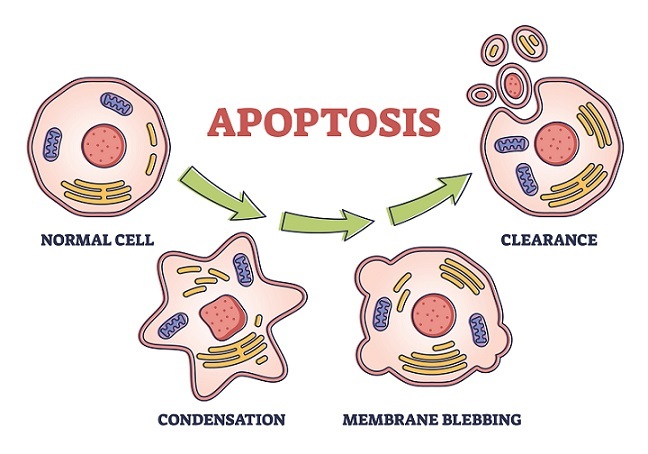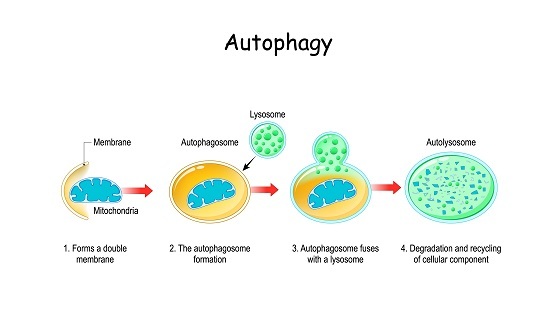
 Data Structure
Data Structure Networking
Networking RDBMS
RDBMS Operating System
Operating System Java
Java MS Excel
MS Excel iOS
iOS HTML
HTML CSS
CSS Android
Android Python
Python C Programming
C Programming C++
C++ C#
C# MongoDB
MongoDB MySQL
MySQL Javascript
Javascript PHP
PHP
- Selected Reading
- UPSC IAS Exams Notes
- Developer's Best Practices
- Questions and Answers
- Effective Resume Writing
- HR Interview Questions
- Computer Glossary
- Who is Who
Programmed Cell Death (PCD)
Introduction
Programmed cell death (PCD) is a crucial process in the life cycle of cells. It is a genetically controlled and regulated process that leads to the death of cells in a controlled manner. PCD is an essential process for maintaining normal cell growth and development in multicellular organisms, and it plays a crucial role in various physiological processes, including tissue remodelling, immune system regulation, and elimination of abnormal cells.
The process of PCD is mediated by a series of molecular events, which are regulated by a complex network of signalling pathways. These pathways are activated by various internal and external signals, such as DNA damage, oxidative stress, growth factor withdrawal, and immune response. PCD can occur through several mechanisms, including apoptosis, autophagy, and necrosis.
Apoptosis
It is the most common form of PCD, which is characterized by a series of morphological and biochemical changes, including cell shrinkage, chromatin condensation, nuclear fragmentation, and membrane blebbing. Apoptosis is triggered by the activation of caspases, a family of cysteine proteases that cleave various cellular proteins, leading to the activation of downstream signaling pathways that ultimately result in cell death.

Autophagy
It is another form of PCD that involves the degradation and recycling of cellular components. Autophagy is triggered by the activation of various autophagy-related genes (ATGs) and involves the formation of double-membrane vesicles, called autophagosomes, which engulf cytoplasmic components and deliver them to lysosomes for degradation.
Necrosis is a less regulated form of cell death, which is often associated with pathological conditions such as inflammation and infection. Necrosis is characterized by cell swelling, membrane rupture, and the release of cellular contents into the extracellular space, which can trigger an immune response.

The regulation of PCD is critical for maintaining tissue homeostasis and preventing the development of various diseases, including cancer, neurodegenerative disorders, and autoimmune diseases. Dysregulation of PCD can lead to the accumulation of abnormal cells, which can contribute to the development of cancer and other diseases.
In cancer, for example, the balance between cell proliferation and cell death is disrupted, leading to the accumulation of abnormal cells. Cancer cells often acquire mutations that impair the regulation of PCD, allowing them to evade cell death and continue to proliferate. Therefore, understanding the molecular mechanisms that regulate PCD is critical for the development of new therapies for cancer and other diseases.
One of the key regulators of PCD is the tumor suppressor protein p53. p53 is a transcription factor that regulates the expression of numerous genes involved in cell cycle arrest, DNA repair, and PCD. In response to DNA damage or other stress signals, p53 is activated and triggers the expression of pro-apoptotic genes, leading to the activation of caspases and ultimately resulting in cell death. Mutations in p53 are found in a wide range of human cancers and are often associated with resistance to PCD.
Conclusion
Programmed cell death (PCD) is a genetically controlled and regulated process that plays a crucial role in maintaining tissue homeostasis and preventing the development of various diseases. PCD can occur through several mechanisms, including apoptosis, autophagy, and necrosis, and it is mediated by a complex network of signaling pathways that are activated by various internal and external signals.
The key regulators of PCD include p53 and the Bcl-2 family of proteins, which are critical for maintaining the balance between cell survival and death. Dysregulation of PCD can contribute to the development of cancer, neurodegenerative disorders, and autoimmune diseases, highlighting the importance of understanding the molecular mechanisms that regulate this process.
Future research in the field of PCD will likely focus on identifying new regulators and signaling pathways involved in this process, as well as developing new therapies for diseases that involve dysregulation of PCD. Overall, a better understanding of PCD will lead to new insights into the mechanisms that govern cell death and survival and may ultimately lead to the development of new treatments for a range of diseases.
FAQs
Q1. What is programmed cell death (PCD)?
Ans. Programmed cell death (PCD) is a genetically controlled and regulated process that leads to the death of cells in a controlled manner. It is an essential process for maintaining normal cell growth and development in multicellular organisms, and it plays a crucial role in various physiological processes, including tissue remodeling, immune system regulation, and elimination of abnormal cells.
Q2. What are the different mechanisms of PCD?
Ans. PCD can occur through several mechanisms, including apoptosis, autophagy, and necrosis. Apoptosis is the most common form of PCD, characterized by a series of morphological and biochemical changes. Autophagy involves the degradation and recycling of cellular components, while necrosis is a less regulated form of cell death.
Q3. What are the molecular events that regulate PCD?
Ans. The process of PCD is mediated by a complex network of signaling pathways, which are activated by various internal and external signals, such as DNA damage, oxidative stress, growth factor withdrawal, and immune response. The regulation of PCD is critical for maintaining tissue homeostasis and preventing the development of various diseases.

